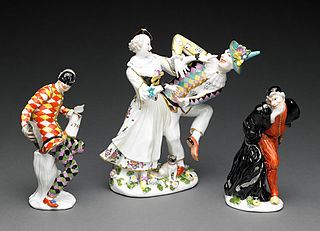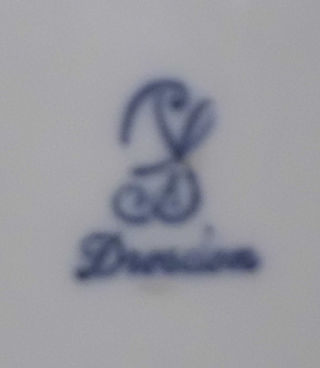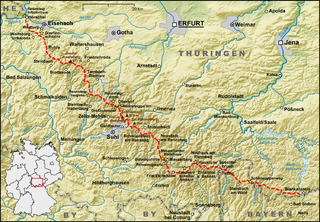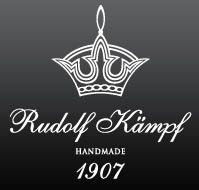
Melitta is a German company selling coffee, paper coffee filters, and coffee makers, part of the Melitta Group, which has branches in other countries. The company is headquartered in Minden, North Rhine-Westphalia.
Carl Walther GmbH Sportwaffen, or simply known as Walther, is a German firearm manufacturer, and a subsidiary of the PW Group. Founded by Carl Walther in 1886, the company has manufactured firearms and air guns at its facility in Germany for more than 100 years. Walther Arms, Inc. is the United States Walther business unit and is based in Fort Smith, Arkansas.

Meissen porcelain or Meissen china was the first European hard-paste porcelain. Early experiments were done in 1708 by Ehrenfried Walther von Tschirnhaus. After his death that October, Johann Friedrich Böttger continued von Tschirnhaus's work and brought this type of porcelain to the market, financed by Augustus the Strong, King of Poland and Elector of Saxony. The production of porcelain in the royal factory at Meissen, near Dresden, started in 1710 and attracted artists and artisans to establish, arguably, the most famous porcelain manufacturer known throughout the world. Its signature logo, the crossed swords, was introduced in 1720 to protect its production; the mark of the swords is reportedly one of the oldest trademarks in existence.

Allach porcelain a.k.a. Porzellan Manufaktur Allach was produced in Germany between 1935 and 1945. After its first year of operation, the enterprise was run by the SS with forced labor provided by the Dachau concentration camp. The emphasis was on decorative ceramics —objets d'art for the Nazi regime. The company logo included stylized SS runes. Sometimes in place of the company name, the pottery markings mentioned the SS: "DES - WIRTSCHAFTS - VERWALTUNGSHAUPTAMTES".

The Sächsische Porzellan-Manufaktur Dresden GmbH, generally known in English as Dresden Porcelain, was a German company for the production of decorative and luxury porcelain. Founded in 1872, it was located in Potschappel, a suburb of the town of Freital in the Sächsische Schweiz-Osterzgebirge district about 8 km (5 mi) southwest of Dresden, the capital of Saxony.

Arzberg is the trademark of a German manufacturer of porcelain, founded in 1887 in Arzberg, Bavaria. Its fame is largely based on designs by Hermann Gretsch, whose Form 1382, conceived in 1931 and based on Bauhaus principles, marks a milestone in modern design; Form 1382 is still produced today, and sold worldwide. Hutschenreuther AG, holder of the Arzberg trademark since 1972, was dissolved in 2000 and the trademark was taken over by SKV-Porzellan-Union GmbH, founded in 1993 by the porcelain companies Schirnding, Kronester and Johann Seltmann Vohenstrauß. In 2004, SKV-Porzellan-Union GmbH was renamed Arzberg-Porzellan GmbH. In 2003, the company had approximately 250 employees. Since 2000, however, the headquarters of the company holding the trademark Arzberg are located in Schirnding, where production took place. After 10 years Arzberg GmbH announced its insolvency. Today the trademark is owned by Rosenthal porcelain.

The Nymphenburg Porcelain Manufactory is located at the Nördliche Schloßrondell in one of the Cavalier Houses in front of the Nymphenburg Palace in Munich, Germany, and since its establishment in 1747 has produced porcelain of high quality. It is one of the last porcelain producers in the world where every single part is made entirely by hand.

The Frankenthal Porcelain Factory was one of the greatest porcelain manufacturers of Germany and operated in Frankenthal in the Rhineland-Palatinate between 1755 and 1799. From the start they made hard-paste porcelain, and produced both figurines and dishware of very high quality, somewhat reflecting in style the French origin of the business, especially in their floral painting. Initially they were a private business, but from 1761 were owned by the local ruler, like most German porcelain factories of the period.

Lichte is a village and a former municipality in the district of Sonneberg in Thuringia, Germany, close to the Thuringian Rennsteig. Formerly in the district Saalfeld-Rudolstadt, it is part of the town Neuhaus am Rennweg since January 2019.

Lichtetal am Rennsteig is a former municipal association in the district of Saalfeld-Rudolstadt, in Thuringia, Germany. The seat of government was in Lichte. It was disbanded in January 2019.

The Fürstenberg China Factory was founded on 11 January 1747 in Fürstenberg, on the Weser river, by Johann Georg von Langen at the direction of Duke Charles I of Brunswick-Wolfenbüttel. It is the second oldest porcelain manufacturer in Germany that still operates on its original site.

Wallendorfer Porzellan or Wallendorf Porcelain is a porcelain manufacturing company which has been in operation since 1764 in Lichte (Wallendorf) in the Thuringian Highlands. Wallendorf is one of the oldest porcelain trademarks in Germany and the whole of Europe.
This is a list of the cultural monuments in Lichte containing all cultural monuments of the Thuringian municipality of Lichte / Lichtetal am Rennsteig, including its sections as of December 2, 2009.

Rudolf Kämpf is a porcelain manufacturer in the Czech Republic.
Weimar Porzellanmanufaktur, or Weimar Porzellan is a German company that has been manufacturing porcelain in Weimar since 1790.
Wagner & Apel Porzellan is a porcelain manufacturer in the small town of Lippelsdorf in the Thuringian Forest. Since 1877, porcelain has been made there entirely by hand. The product range includes lifelike animal and bird sculptures, lovely child figurines, decorative Christmas and gift items, modern vessels in both traditional and modern styles. The family business is being run by the fourth and fifth generation.
The Könitz Porzellan GmbH is a company in Könitz, a district of the commune Unterwellenborn. The company includes the Wiedemannsche Druckerei, the brand WAECHTERSBACH as well as the Weimarer Porzellanmanufaktur.

Wallendorf is an Ortsteil (subdivision) of the Lichte municipality. It is located in the district of Saalfeld-Rudolstadt in Thuringia, Germany, close to the Thuringian Rennsteig.

Rosenthal GmbH is a German manufacturer of porcelain products and other household goods. The original firm was founded in 1879 in Selb, Bavaria. Since 2009, Rosenthal has been owned by the Italian company Sambonet Paderno Industrie.

Ludwigsburg porcelain is porcelain made at the Ludwigsburg Porcelain Manufactory founded by Charles Eugene, Duke of Württemberg, on 5 April 1758 by decree as the Herzoglich-ächte Porcelaine-Fabrique. It operated from the grounds of the Baroque Ludwigsburg Palace. After a first two decades that were artistically, but not financially, successful, the factory went into a slow decline and was closed in 1824. Much later a series of other companies used the Ludwigsburg name, but the last production was in 2010.
















